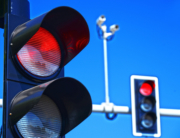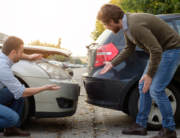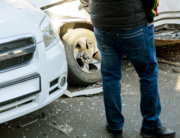Back-over crashes are uncommon, but still cause hundreds of deaths every year. A driver’s inability to completely see behind the vehicle causes many of these accidents. Children and toddlers are the most at-risk for these accidents due to their small size and unpredictable nature. Attempts to reduce back-over accidents began as early as 1956 in Buick’s Centurion Dream Car concept, in which backup cameras sent images to an interior TV screen.
Only recently have rear-facing cameras become standard in newer model cars. But new data from the National Highway Traffic Safety Administration (NHTSA) is bringing to light a questionable rate of safety from this feature.
The NHTSA’s Back-Over Crash Study
While companies tout the effectiveness of backup cameras, the NHTSA reports that from 2008 to 2011 back-over injury rates dropped from approximately 13,000 to 12,000 — only 8 percent. This minor decrease comes even after the number of backup cameras in new vehicles rose from 32 percent to 68 percent.
Researchers believe while the cameras show a better view of behind the vehicle, it cannot replace a driver’s full attention and survey of the area. Janette Fennell, president of KidsAndCars.org, a car safety non-profit, agrees. She said that drivers are distracted and, even with the aid of backup cameras, do not check the surrounding area enough before backing up.
Officials believe the cameras may be giving drivers a false sense of security and allowing them to drop their guard when in reverse. While backup systems have warnings and alarms when they detect objects, the reaction time to apply the brakes is often too slow to avoid a fast moving object like a child.
Note: The study is not saying that backup cameras are dangerous; it is merely saying that drivers rely too fully on the cameras and do not manually check for cars, pets, or people.
Safety Tips for Drivers With or Without Backup Cameras
If you have a backup camera, you should use it as a secondary source of reassurance that everything is clear. Before getting into your car, check around the vehicle for any objects and note any children or pets near your driveway. Once you know everything outside your vehicle is secure, check again both manually and with your backup camera just in case things have changed since you entered your vehicle.
If you do not have a backup camera, make sure you are using the proper positioning as explained in the Florida Department of Motor Vehicles’ Driver’s Handbook. Place your right arm on the back of the passenger seat and turn around so you can look directly through the rear window. The handbook also warns about relying completely on rear/side view mirrors and backup cameras, as they may allow the driver to miss small animals and children.
Safety Tips for Pedestrians
Always be aware when you are walking near a driveway or in a parking lot where vehicles are actively backing out. If your children play in your front yard or street, always make sure someone is supervising them, and make sure they are aware of the dangers of playing too close to cars. Do not rely on a car’s backup lights to tell you they are about to reverse, assume every car is about to begin reversing and walk a safe distance from the rear of all vehicles.
For more information on vehicle safety features and studies, visit our blog.
 English
English  Español
Español 




